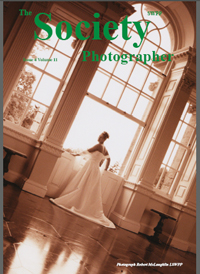articles/Digital/digitalseriously-page1
How Seriously Should We be Thinking About Going Digital? - part 1 of 1 2
by Dave Simm Published 01/07/2001
Never at any time in history has making a technology upgrade been less expensive in the photography business! No, I haven't lost my marbles, it really is true. When I converted my black and white darkroom to a colour lab., back in the late sixties it cost me an absolute fortune, moreover the recovery time for capital investment was calculated in years.
If you convert your studio to digital today you can expect to recover your investment in months rather than years, just on the savings in film and proofing.
Going digital doesn't mean that you have to go image crazy, adding tacky little angel wings to baby pictures, but it does mean that you will have total creative control of your studio's output. For instance, how many times have you returned prints to your lab for colour balance correction, because you or your client didn't like them the first time round?
That would come to an end immediately. Your computer monitor would be calibrated to your lab's standard and you would colour correct to your own taste before placing the order with the lab. You could save an enormous amount of money on print matting, by increasing the canvas size in Photoshop and choosing a background colour for it, you prints would appear to have a coordinated coloured matting. Your wedding albums could take on a whole new look, even without changing the way you shoot.
Of course there is still much to be taken into consideration before you rush out to invest thousands into new equipment. Which type of camera should you buy? what are the pros and cons of the available cameras? and how would they affect the way you work?
If you are a wedding photographer, consider this, you can't go out to cover a wedding with just one camera! what if it breaks down or you drop it?
You must have a back up system, either film or digital. Are you going to spend an arm and a leg on one of those bastardised 35mm cameras, with a CCD chip where the film used to be. If you take any wide angle pictures, you will now need an expensive fisheye, just because the chip is only about two thirds the size of a 35mm frame.
I overcame that problem by going out to purchase the back up camera first. In fact I still haven't acquired the camera I intend to use as my front liner, I haven't yet found one that I like well enough. When I bought my Olympus E10, I did so because it was ZLR with built in zoom lens. The lens covered all the range of primary lenses that I would take to a wedding, medium wide angle, standard and short telephoto. In the beginning I really intended to use primary lenses on a front line digital camera for wedding work, but the more I learned about digital the quicker I realized that wasn't smart.
Wedding photographers have the dreadful habit of putting lenses in their pockets, I am no exception! Pockets are full of lint and dust, which in turn gets into the camera. Don't take my word for it, go take a look in your viewfinder. All that muck, would just about ruin a CCD and render a digital camera absolutely useless.
Another reason I picked the Olympus was the working capacity of the battery system, you can purchase an optional Lithium Polymer battery for the E10, I have never yet run out of power at a wedding, I figure to get five hundred shots, or thereabouts, on one charge, then it was the only true 4.1 megapixel out there at the time.
Above all, the images I have produced with it, from 10" x 8" through 24" x 20" hold up very nicely against some of my professional colleague's cameras, all of them paid somewhere between double and eight times the cost of the Olympus. The illustrations with this article more than justify my confidence for an instrument I chose to be my back up.
You are currently on page 1
- How Seriously Should We be Thinking About Going Digital? page 1
- How Seriously Should We be Thinking About Going Digital? page 2
1st Published 01/07/2001
last update 09/12/2022 14:53:20
More Digital Articles
There are 0 days to get ready for The Society of Photographers Convention and Trade Show at The Novotel London West, Hammersmith ...
which starts on Wednesday 15th January 2025





